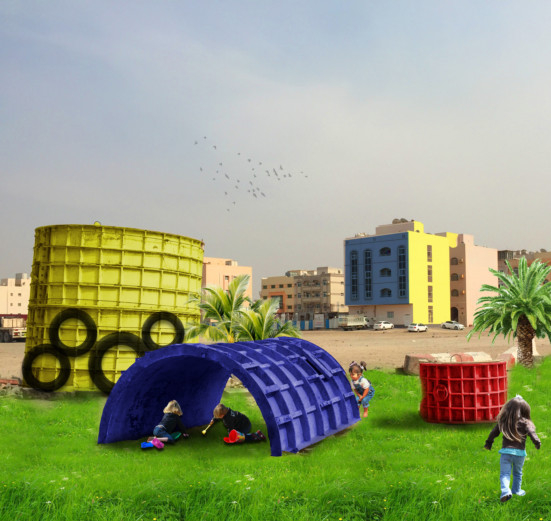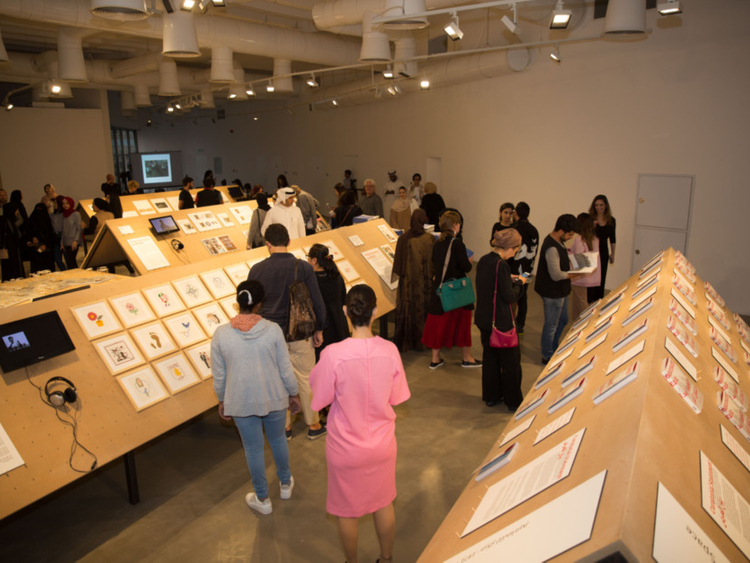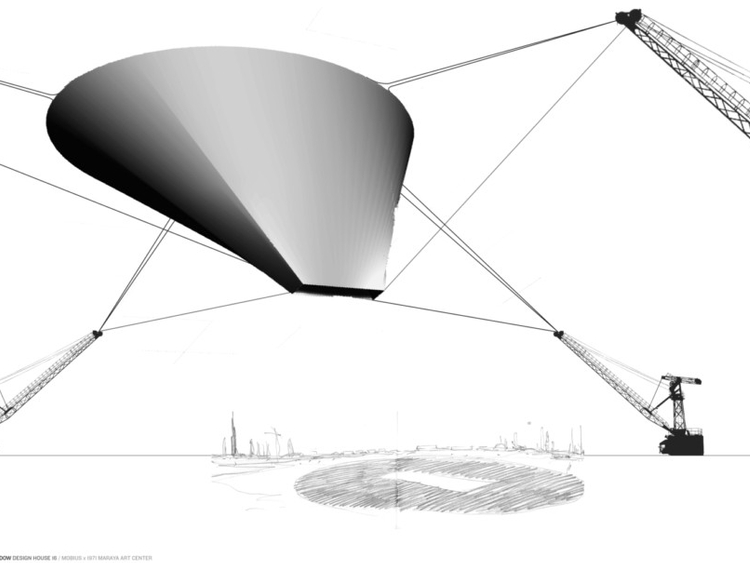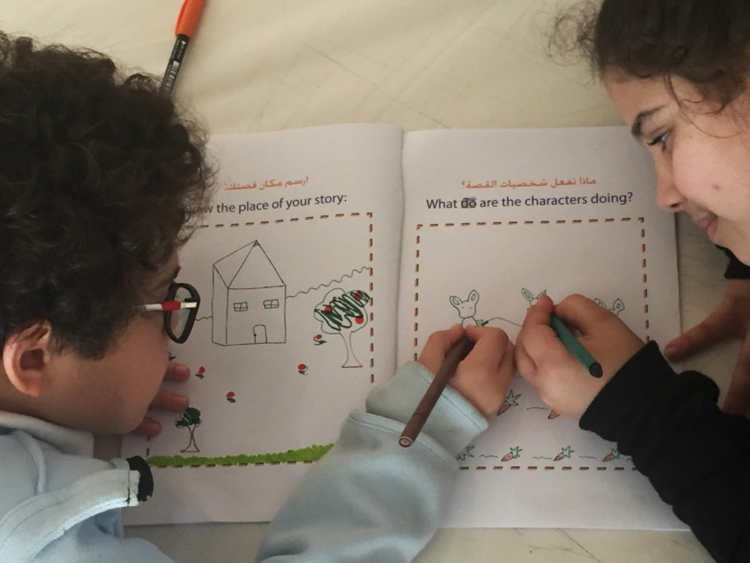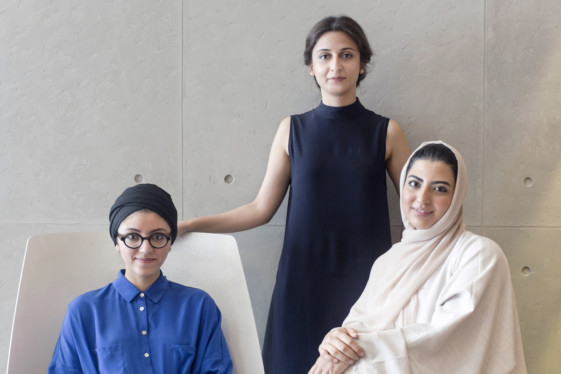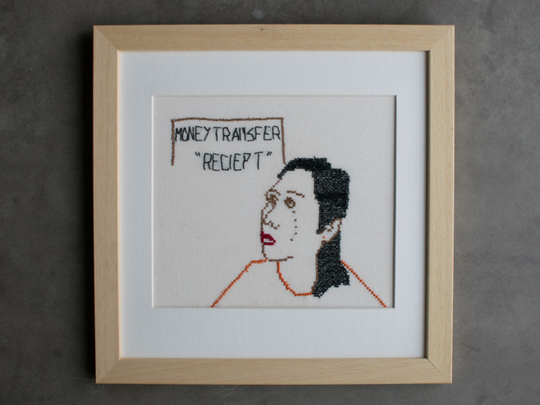
A research-led design project entitled Change, Coordinates + Someone Else, curated by Dubai-based Mobius Design Studio as part of its annual Design House project, is underway at the 1971 Design Space in Sharjah.
The Design House programme has been running annually since 2013, when the initiative started. Designers submit their projects based on an annual theme. The participating designers this year set out to investigate the conditions of a location and a group of people, “an X”, then propose design-driven solutions that address an existing short-coming, or uncover hidden potentials that could perhaps support, improve the quality of life, or give voice to their X.
The founders, Hadeyeh Badri, Hala Al Ani and Riem Ibrahim, say their venture Mobius was born out of the need to create a space and an opportunity to balance commissioned work, studio-initiated projects, and independent work.
Launched in 2010 and based in a capsule studio at Tashkeel in Dubai, the trio have worked with various academic and cultural institutions: Dubai Design Week; the Tourism and Culture Authority; New York University Abu Dhabi; the 1971 Design Space; SIKKA Art Fair; Tashkeel; The American University of Sharjah; and the UAE Pavilion at the Venice Biennale.
Speaking about the concept behind launching the annual Design House project, they say: “Back in 2013, there were no platforms that cater to non-commercial designers. Design House was therefore initiated as an attempt to create a context to be able to accommodate research-driven, process-oriented design work. It is meant to become a catalyst for locally based practitioners from various disciplines to pursue inquiries and curiosities that are contextual and critical. The programme and exhibition allows for exposure to the participating designers, but also offers the opportunity for participants to have a meaningful exchange of expertise and experiences throughout the duration of the projects’ development.”
It also aims to draw in the general public and facilitate a conversation that would potentially allow a more profound understanding of what “design” is, not only as a line of practice, but as a way of thinking.”
Usually, the Design House theme is quite general but addresses certain critical issues that Mobius, as organisers and curators, find to be of special importance.
“The theme is also meant to cater to the interest of designers of different backgrounds, and often encourages cross-overs and collaborations,” the organisers say. “In the past, the Design House exhibition housed a range of different design outcomes ranging from objects, material experiments, time-based narratives, typographic studies to urban interventions and community-engagement projects.”
Now, the organisers are constantly re-evaluating and questioning the objectives, operation and function of Design House in response to the developing experience with the programme and its shifting relationship to the bigger context.
This year’s project has been especially challenging. “Starting points are often elusive, especially if the process requires engaging with others outside one’s circle — be it governmental entities, communities that do not share the same language, or individuals that are sceptical of one’s motivations,” Mobius says. “A good place to start, however, is by defining the problem, and employing different research methods to learn as much as possible about one’s subject matter.”
The Design House participants developed their projects over the span of six months, leading up to the first phase of the exhibition in December, where the audience was invited to reflect and share their thoughts and opinions about the validity of the problems and solutions with the designers, who continued to work on their research until the second phase in March.
“This more open format, and the two-phased exhibition, intended to assist designers in refining their parameters of change based on direct responses from members of the community, and hoped to lead the audience to start questioning their role in igniting change and how they can be part of this investment in people and in place,” the Mobius team says.
This year’s edition of Design House has another special feature — its first collaborative effort with 1971 Design Space, Sharjah and a departure from its first support system in Sikka Art Fair .
“Our collaboration with Mobius Design Studio on Design House shows our commitment as a centre to highlight the importance of Design thinking and research” Giuseppe Moscatello, Director of 1971-Design Space, says. “1971 Design Space was an incubator for ideas that positively influence change in our city, and the projects participating this year have extended their work towards the different communities in Sharjah, and our role as an institutional partner is to provide the infrastructure needed for such important projects to take place.”
The show opened on Mar 8 under the theme of Change, Coordinates + Someone Else.
The project attempted to investigate how people extend their expertise to their communities, and how in turn organisations in Sharjah are receptive of social arrangements. Difficult questions are posed about the city of Sharjah and its residents, provoking reactions by opening channels of feedback to the exhibited proposals.
Projects participating this year are: The Little Ambassadors by Mays Albeik; Stitchanonymous by Ola Dajani; Nomadic Shadow by Juan Roldan Martin and Beatriz Itzel Cruz Megchun; Wajha: Sharjah Edition by Ali Almasri and Hussein Alazaat; Emptyless by Caravan (Ivan Parati, Emanuela Corti); Adaptive Space by Cristiano Luchetti; and Little Syria in the Heart of Sharjah by Reem Falaknaz and Tulip Hazbar.
But would some of the proposed design projects like Nomadic Shadow, Adaptive Space and Emptyless even become fully realised in their proposed locations?
“The idea of the exhibited projects is to highlight the potentials packed in the investigated locations,” the Mobius team answer. “They were developed in close proximity to the residents of those areas and were informed by their immediate needs. The proposals are therefore realistic in their attempt to improve the contexts in which they originated. As designers, it is partly our responsibility to bring those possibilities to light. However, the realisation of such projects is highly dependent on logistics that can only be facilitated by authorities or entities that have access to appropriate resources.”
Mobius hopes that the proposals attract the attention of those with enough power and interest to bring them to life, and support the designers to continue developing and eventually realising the full extent of their propositions.
To try and extend the longevity of the projects, Mobius has developed an accompanying publication, highlighting the projects and the importance of investing in a creative community.
According to the Mobius team, the exhibition was generally received positively.
“It ignited interest and curiosity simply because it largely did not cater to the expectation of a ‘design exhibition’,” the team says. “We were forced to answer questions like ‘how is this design?’, a valid question that in its forwardness allowed for an important dialogue to take place; about the role and responsibility of designers and what the definition and expectations are when we speak of a design practice.”
Sparking change
A brief introduction to the seven participating projects at this year’s Design House show:
The Little Ambassadors
Mays Albeik addresses the divide between different social circles in Sharjah and brings together children from different backgrounds, teaming them together to create collaborative stories. Using story telling as a vehicle to bridge cultural gaps, the project targets children in schools of different demographics, bringing the bubbled communities of Sharjah together.
Stitchanonymous
Ola Dajani’s community project seeks to enable domestic workers to express their individuality through participation in a collective creative project. Participants were given a kit with material needed to stitch a small piece of fabric that is approximately 20x20 cm. The embroidered final pieces are available for sale and the proceeds go directly to the makers.
Nomadic Shadow
This project by Juan Roldan, Beatriz Itzel Cruz Megchun and Malak Al Ghuel aims to visually represent an alternate space that is self-regulated by inhabitants according to the temporary nature of their activities. The specific area selected was in Al Qasba, where Southeast Asians temporarily occupy a private and public place on Friday mornings to practice cricket – the users are engaged as a collective and take unified actions in respect to the use of the place-space. The design team developed ‘digital’ interventions based on the temporality of the practice and the unpredictability of the users. They have proposed using signs to establish a permanent visual intervention as reminder of the landmark.
Wajha: Sharjah Edition
Taking its name from the Arabic word for facade, Ali Almasri and Hussein Alazaat’s design work is focused on shopfronts. Wajha was founded in Amman in 2012, as an independent social initiative that helps the community by offering complimentary design services. In Sharjah, Wajha used facades to reshape the city’s identity through signage systems, hoping to stimulate a dialogue about the value of design in the community through social media platforms.
Emptyless
Ivan Parati and Emanuela Corti of Caravan in this project works alongside low-income communities. It involves mapping, designing, executing and managing self-sustained public spaces within the suburbs of the city. Empty plots in between residential and industrial spaces could be populated with positive and vibrant activities that would revamp the community spirit of the neighbourhood. During the series of activities, people will be empowered to self-manage the space and perhaps expand the project to further spaces.
Adaptive Space – Muwaileh
Cristiano Luchetti’s intervention on site aims at representing how inhabitants are the real designers of their public spaces. The area selected, Muwaileh, is a very recent settlement rapidly built in the last few years. The area lacks essential infrastructure and services and is next to an industrial compound, nestled between high traffic roads, and one of the cheapest areas to live. The inhabitants usually change the left-over spaces to adapt to their needs. The idea behind this project is to project the cricket world championship match on one of the blank facades of blocks. This event will turn an apparent left-over space into the main public area of the neighbourhood for a limited amount of time.
Little Syria in the Heart of Sharjah
Sharjah has, over the years, become home to a large number of Arab migrants. In this project, Reem Falkanaz and Tulip Hazbar document the proliferation of Syrian outlets in the city. The research-based work takes the form of a broadsheet publication that focuses on the Syrian food experience in Sharjah and its relationship to memory of one’s homeland.
A vison of urban and cultural development
Weekend Review spoke to Giuseppe Moscatello, Director of Maraya Art Centre and 1971 Design Space, about the collaboration with Design House on Change, Coordinates + Someone Else.
What are the issues from the point of view of the host in organising such a research-based initiative where there are many players involved?
“The challenge in any exhibition is always trying to translate the ideas and aspirations of the curator and the artists or designers involved into a successful exhibition and project. In this specific exhibition, the curators at Mobius Studio did a fantastic job in managing the exhibition and the designers and our role as an institution is to oversee the whole process and facilitate the relationship between the different players. The challenge of course is always time but when you work with professionals and have a fantastic team you rely on, these challenges often turn into opportunities of growth and success. And this is our advantage at 1971 Design Space.”
What are the main differences between curating a straight-forward art exhibition and such design shows?
“Of course, this exhibition is not the final outcome or chapter as customary in art exhibitions. This exhibition in fact signals the beginning of research-led projects and the continuation of others commissioned by the centre. It is very interesting to be part of an exhibition that invites participation even after the opening, the works and ideas submitted and shown all have potential for growth and development, and this is why such a show was important for us, because it aligns with our vision to support research and to effectively contribute to the urban and cultural development of our country.
Coming to this show, Change, Coordinates + Someone Else, what are your comments regarding the presentation and projects. Will you as a host take the lead in helping some of the projects implemented in Sharjah, instead of it remaining on the design board?
“Our role as an institutional partner is to advocate for positive urban change and influence in the city of Sharjah, and this exhibition has proposed great ideas that we have supported by giving the right platform for it to be exhibited and discussed and by inviting policy makers in the city to interact with the projects. We connected the dots in the Design House Exhibition between designers, policy makers and curators.
N.P. Krishna Kumar is a writer based in Dubai.
Change, Coordinates + Someone Else will run at 1971 Design Space in Sharjah through on May 27.



